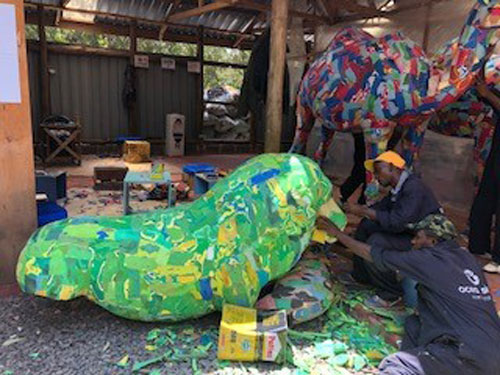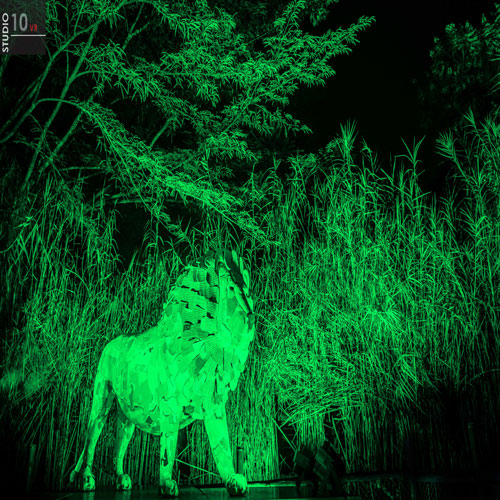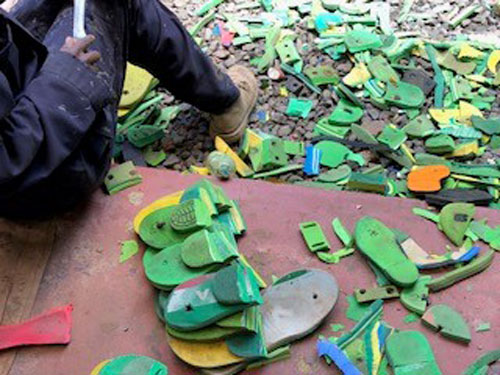Greening Initiative 2018
News
13 March 2018Greening Initiative 2018: #GreeningSimba
To mark St. Patrick's Day, Ireland's Ministry of Tourism in 2009 launched an Annual Global Greening initiative. The global campaign sees some of the world's most famous attractions and iconic images going 'Green' on 17th March 2018 during Ireland's National Day celebrations.
The 9th Annual Global Greening initiative will span mainland Europe, Great Britain, North America, Australia, United Arabs Emirates, South Africa, and Kenya.
In Kenya, the Embassy of Ireland's 'Greening' initiative is intended to bring attention to the plight of lions in Kenya and the conservation efforts being employed to protect simba (Lion). In the past, the Embassy of Ireland has partnered with other stakeholders to raise awareness of the predicament of some other endangered animals in Kenya. The focus is on 'Greening' the Big Five animals (big five game animals in Africa are the lion, leopard, rhinoceros, elephant, and Cape buffalo) and the conservation efforts being employed to protect these species.

In 2016, in conjunction with the National Museum and Kenya Wildlife Services the Embassy 'Greened' 'Ahmed' the iconic elephant in the National Museum. In 2017, the statue of the mama and baby rhinoceroses at the National Park in Nairobi was 'Greened', which helped raise awareness of the plight of the Rhinoceros in the country.
Africa is home to most of the world's lion population with majority of the population being found in Southern and East Africa. However, across Africa lion populations are reported to be on the decline; with a recorded 40% decline in African lion populations in 20 years. Factors affecting the decline include, human-lion conflict, habit loss as a result of expansion of human activities, loss of wild prey, disease and illegal trade. In Kenya there has been a 28% decline in the lion population from 2002 to date.
Some Lion Facts:
- Lions are more social than most other cat species. They live in prides composed of 3 to 30 individuals, including related adult females and their young.
- Each pride has its own social dominance hierarchy in which the weakest male ranks above all females. If new males defeat resident males, resident males will leave the pride and never return!
- Lions communicate with each other in a wide variety of ways. The most important is through body contact i.e. rubbing their cheeks together, may sometimes be prolonged into neck and body rubbing as well.
- Lions are nocturnal and are reputed to rest for up to 20 hours a day!
- Lions breed year-round and are usually polygynous (breed with several females). It is estimated that lions copulate 3,000 times for every cub that survives over one year!
- Successful males that takeover prides have, on average, about 2 year before another younger, stronger collation will replace them!
The first Kenya National strategy for conservation and management of lions and spotted hyenas (2009-2014) was developed by Kenya Wildlife Service (KWS) with the main aim of guiding efforts towards the conservation and management of lions and spotted hyenas.

This year's campaign will be launched in partnership with Kenya Wildlife Service (KWS), Kenya Tourism Board and Ocean Sole on Thursday 15th March 2018 at (KWS) Headquarters in Lang'ata. In addition to raising awareness on the plight of Lions, the 'greening' initiative will also bring to focus the possibilities of recycling ocean waste in Kenya. Most people are aware of the plastic problem but there is a looming 'flip-flop' problem.
Flip-flops are most commonly thought of as causal beachwear but in fact there are over 3 billion people that use them as their only pair of 'shoes'. In emerging warm climates, billions of flip-flops are made every day. These get worn for years and after many repairs are discarded into dumpsites that ultimately seep into our Earth's waterways and then into our oceans. The discarded flip flops pile up and block waterways for fresh water and make their way to oceans. It is estimated that up to 7 billion tons of waste is dumped into the sea per annum with an average of 13,000 pieces of plastic and synthetic materials (flip-flops) floating on every square kilometer of ocean. The impact of this pollution generates a cost of over $8 billion a year with $334 million directly attributed to flip-flops.

As part of the campaign, the Embassy has commissioned the development of a life size lion. Ocean Sole, a local conservation entrepreneurship Non-Governmental Organization, sculpted the life sized lion using flip-flops that have been washed up on the coasts and rivers of Kenya.
The Flip-Flop lion will be named Taji, a Kiswahili word for Crown. Here are some of Taji's vital statistics:
- 1,204 flip-flops were recycled to create Taji;
- 20kg of recycled Styrofoam was used for his inner structure (recycled from old shipping containers);
- It took 3 weeks to produce Taji;
- Five Senior Artisans were involved in the making of Taji;
- It took a total of 605 hours to complete Taji.
Taji will be donated to Kenya Wildlife Service where it will be displayed in the Nairobi Safari Walk and will be accessible to all visitors.
The initiative is also broadly aligned to Sustainable Development Goals (Goal 6 on clean water and sanitation; Goal 12 on sustainable consumption and production; Goal 13 on climate action; Goal 14 on life below water; and Goal 17 on partnerships).
#GreeningSimba
The event will be officiated by Ireland's Minister of Public Works, Kevin Boxer Moran, T.D.; Cabinet Secretary Tourism & Wildlife, Najib Balala, and KCB Group Chief Operating Officer, Samuel Makome.
|

